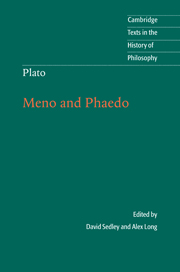Introduction
Published online by Cambridge University Press: 05 June 2014
Summary
Plato's progress
Socrates (469–399 bc) was the first great Athenian philosopher. His pupil Plato (427/424–347 bc) was the second. Socrates, who left nothing in writing, was a charismatic but also provocative public figure on the streets of Athens, raising deep ethical questions with all and sundry, and thereby spawning both adulators and sworn enemies. The final victory of his enemies, who secured his conviction and execution at the age of 70, also marked his canonization as a philosophical guru and martyr. Over the following hundred years and more, numerous philosophers set out to resume and complete the project which Socrates was seen as having initiated. Among these, it was Plato who stood out, both as an incomparably great prose writer and as arguably the most seminal of all ancient thinkers, even if his own pupil Aristotle could compete for this latter title. Plato's philosophical writings were mainly in the form of dialogues and, unusually for an ancient Greek author, they have survived in their entirety.
Although we know Plato's dates with some precision, have good evidence that the Laws was his last work, and can group a few other dialogues near the end of his life because of their stylistic similarity to the Laws, we have no reliable indicators of date for the great majority of his works, including the Meno and Phaedo.
- Type
- Chapter
- Information
- Plato: Meno and Phaedo , pp. ix - xxxivPublisher: Cambridge University PressPrint publication year: 2010

